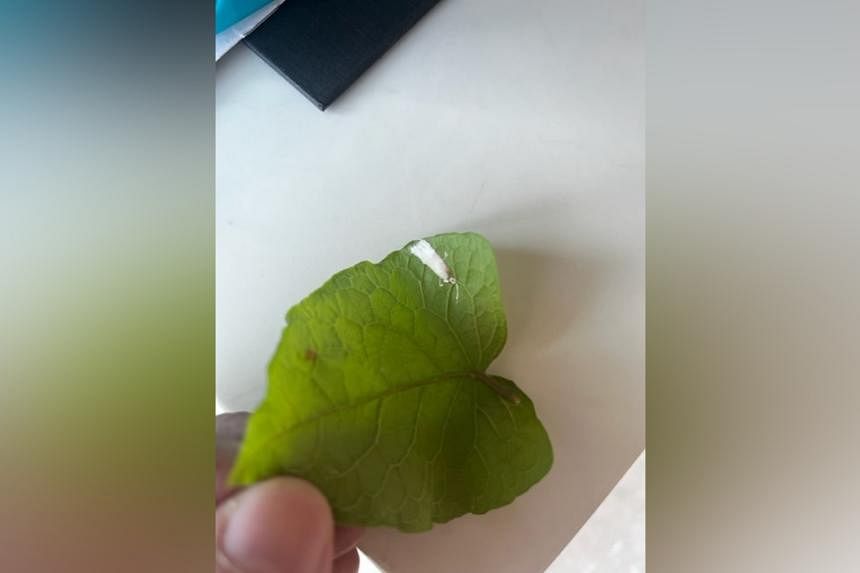Use dinetofuran powder around infested plant’s root zone
This bug appeared on my Mexican coral vine and is spreading rapidly. I have used alcohol, vinegar and soap solution as a spray, but to no avail.
Alan Seah
The white spot on the leaf is likely a type of scale insect, a sap-sucking pest which can weaken your plant with its feeding activity. The substances you mentioned using, such as alcohol and vinegar, may burn your plant if not used in the right concentration, while soap may not be effective if the pest population is high.
As the Mexican coral vine grows quickly, you may want to prune heavily infested plant parts so there are fewer pests to deal with, as the canopy of a large plant can be difficult to thoroughly cover with pesticide.
The plant should bounce back with new growth and you can manage any infestation from there. Consider using summer oil, available at local nurseries, to spray on your plant – the oil suffocates the pest.
As this plant is largely grown as an ornamental one and not for edible purposes, you can place dinetofuran powder, also available at nurseries, around the root zone of your plant. Dig several small holes, pour the powder in and cover these with soil. Water your plant to dissolve the pesticide and let the plant take up the chemical.
If using this method, ensure you do not have pets or young children at home, who may probe the location where the pesticide is used, and that the plant is not near bodies of water with aquatic life.
Money plant needs more water and shade
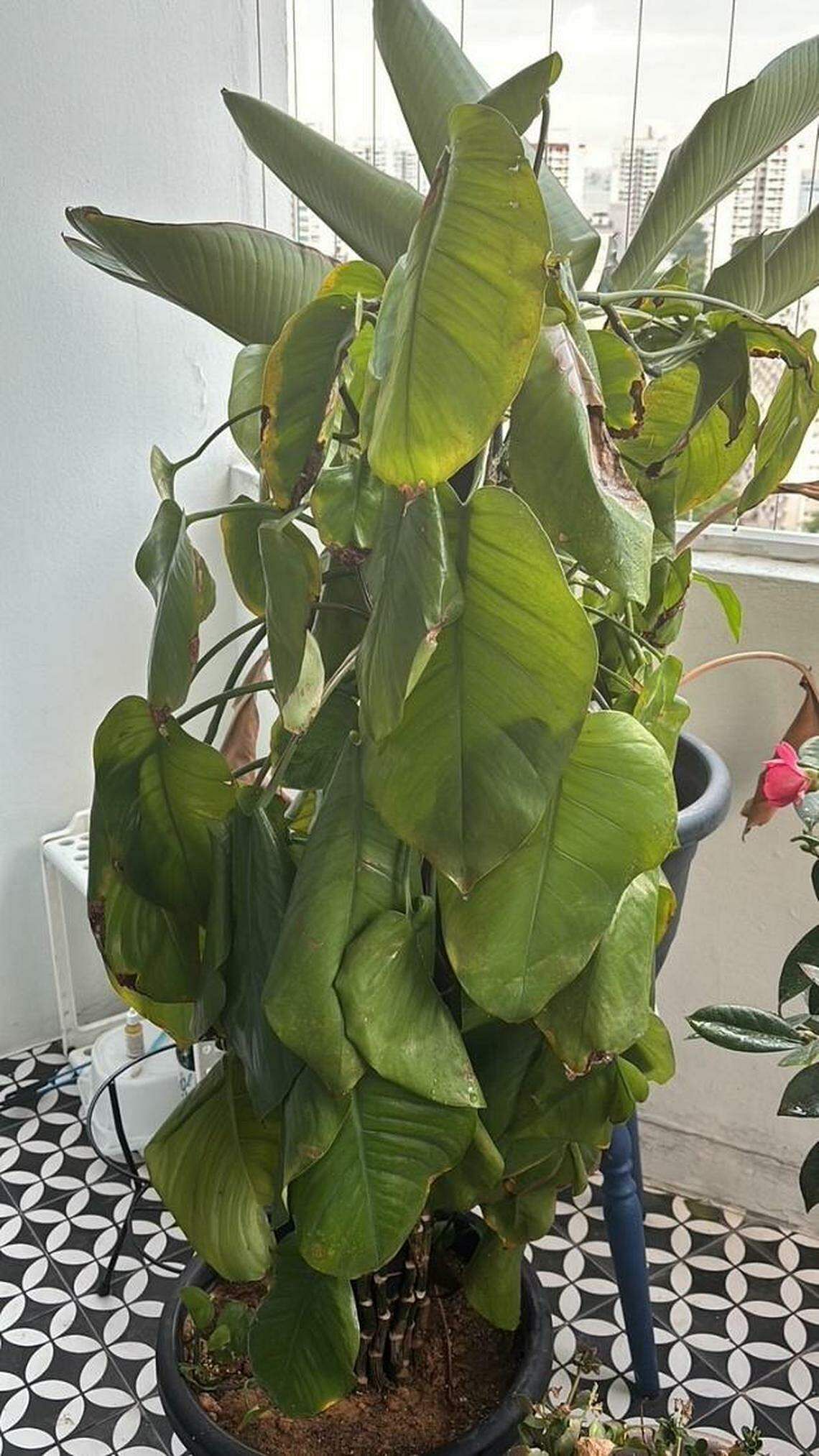
What is wrong with my money plant? It gets morning sunlight, but the leaves have been drooping for a while.
Lim I Reen
The limp yellow leaves indicate a lack of water. In sunny sites, plants may need to be watered more frequently to ensure their water needs are met, as the rates of evaporation and transpiration are higher under such conditions.
When watering, ensure excess liquid trickles out from the drainage holes below the pot. This is an indication that the root ball has been thoroughly moistened. Ensure your plant has a healthy enough root system to take up the water it needs.
Grow your money plant in a semi-shaded location, as it can burn and wilt after prolonged periods of direct sunlight.
Liberian coffee commonly grown in Singapore
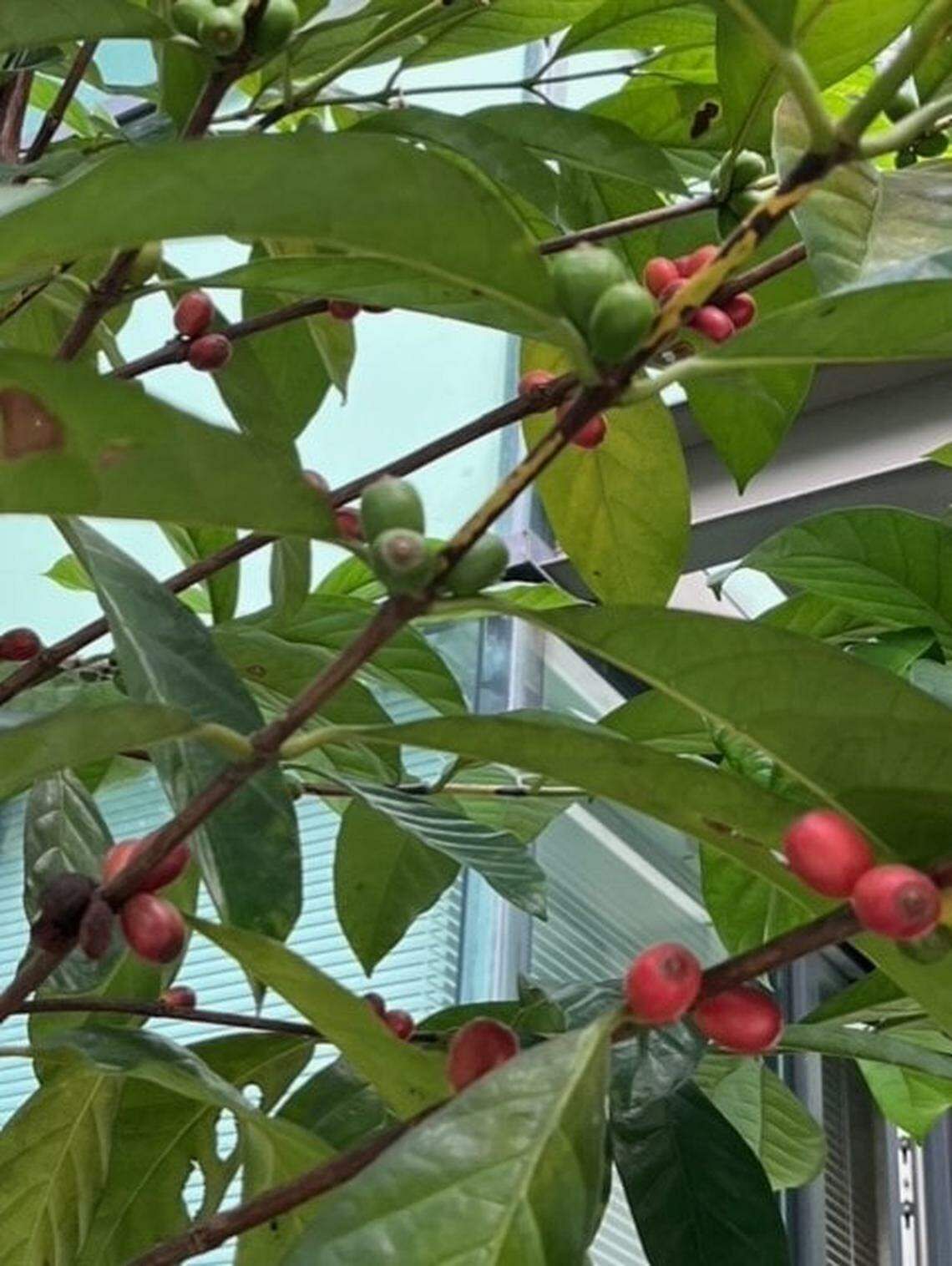
These coffee trees in the garden of our condominium have attracted civet cats, which eat the ripe fruit. What species are these trees and is the coffee drinkable? I have been told that they are arabica and not robusta. The plants are propagated by ripe seeds that fall to the ground.
Cheah Chew Ping
These are Liberian coffee trees (Coffea liberica), the most commonly grown coffee tree species in this part of the world. The plant is heat-tolerant and produces large fruit. The seeds within can be processed and made into coffee.
Plant is dogfennel
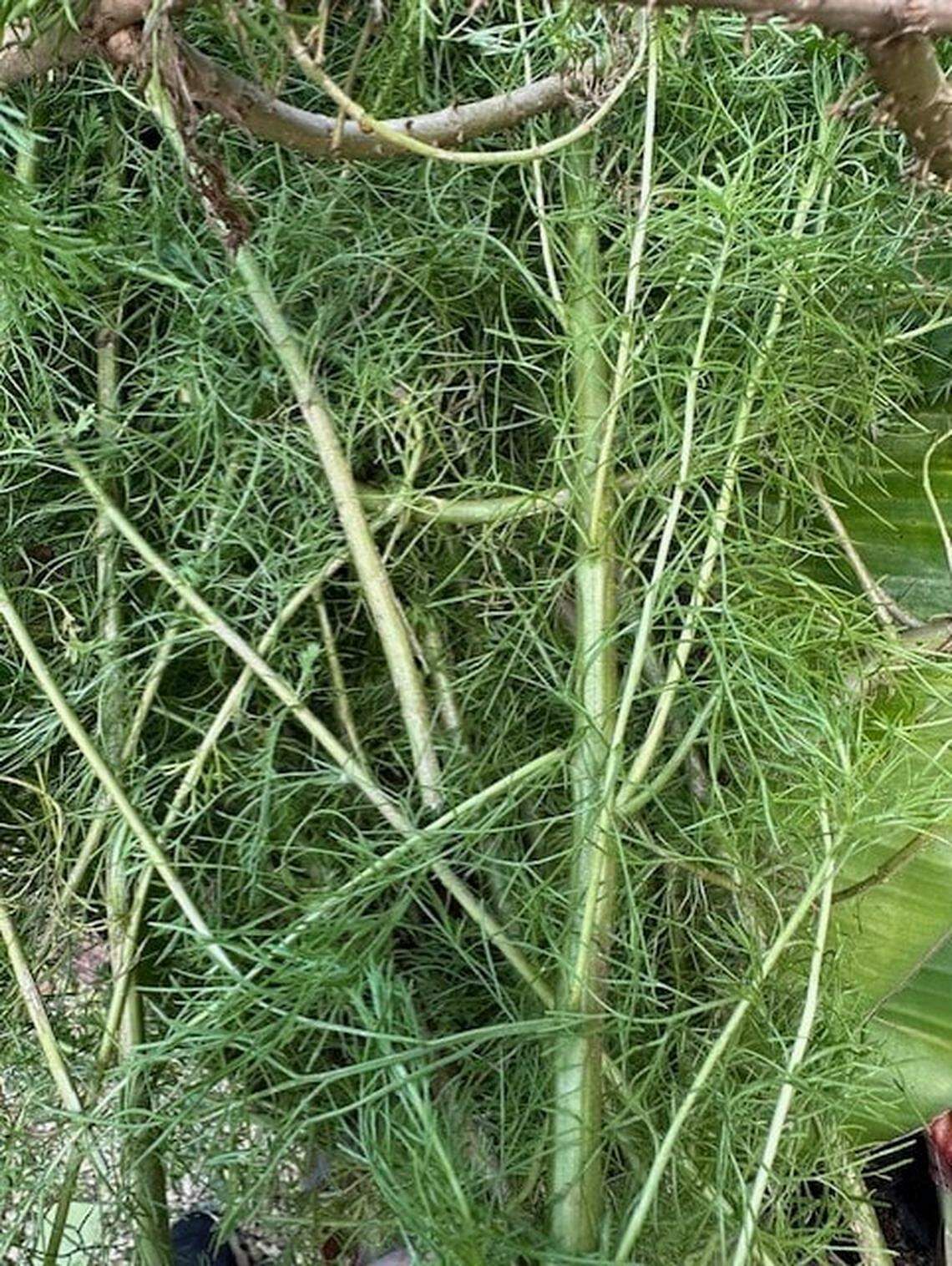
What plant is this and what are its medicinal values, if any?
Chua Suan Choo
This plant is dogfennel (Eupatorium capillifolium), which grows as a tall shrub with upright stems and light green feathery leaves.
The dogfennel contains substances that can affect liver function, so do not use it to treat any health conditions.
Also, do not use it as a substitute for the dill herb (Anethum graveolens). Dill grows as a small herbaceous plant with blue-green leaves in a rosette pattern stemming from a rootstock, and is commonly confused with dogfennel.
Tomato needs more light
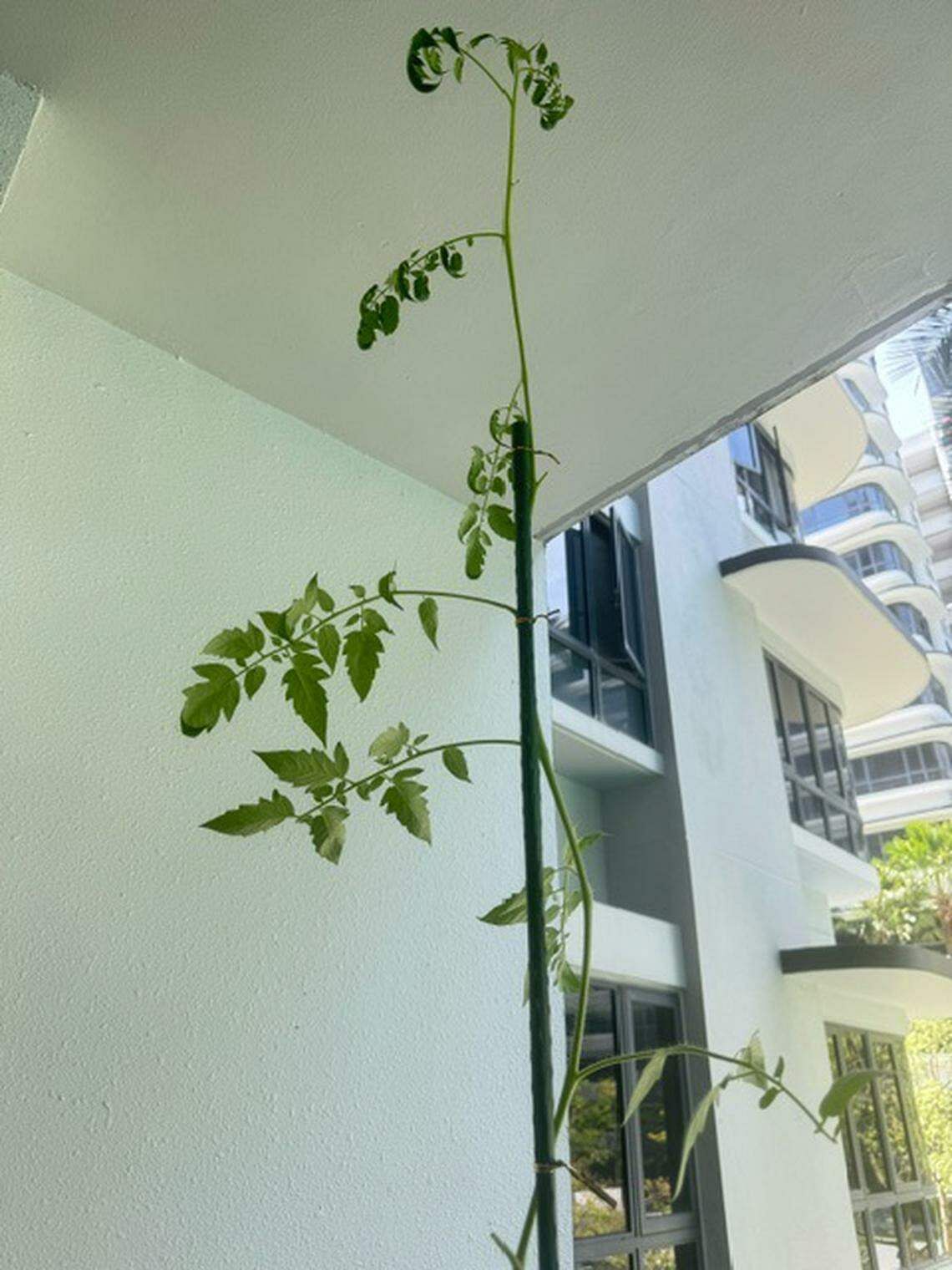
What plant is this?
Roslin Chua Cheng Hwee
This plant is a tomato (Solanum lycopersicum). The internodes of the stem are spaced rather far apart and the stem is skinny, which indicate that the plant needs more sunlight.
The tomato is a sun-loving plant and needs at least six hours a day of direct sunlight. Your tomato variety grows in a vine-like pattern, so install a trellis for a tidier growth habit.
- Answers by Dr Wilson Wong, an NParks-certified practising horticulturist and parks manager. He is the founder of Green Culture Singapore and an adjunct assistant professor (Food Science & Technology) at the National University of Singapore.
- Have a gardening query? E-mail it with clear, high-resolution pictures of at least 1MB, if any, and your full name to stlife@sph.com.sg. We reserve the right to edit and reject questions.
